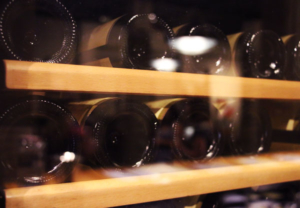Part 1: Why to Store Your Wine Properly
You know why proper storage is important, but in practice, how should you go about doing this?

Wine cellars or refrigerators are the most common “proper” type of wine storage. These are purposely built refrigerators designed for home storage of fine wine that will ensure a cool, humid environment with minimal temperature fluctuation and vibration. There are a dazzling array of sizes and quality levels to choose from. Unfortunately, my experience with off brand (and therefore less expensive) wine cellars is far from ideal. The compressors tend to blow out conveniently just after the warranty expires, and it is next to impossible to find replacement parts. Established and trusted brands, such as EuroCave, VinoTemp, Wine Enthusiast and Marvel are amongst the best in terms of reliability and repairability.
Offsite Wine Storage is a fantastic option for those with larger collections, choosing an offsite storage facility is likely the safest way to store a wine collection. Whether it is a wine-specific storage center, like the Wine Bank in Menlo Park, or a traditional self-storage facility with specialty wine storage units like Stor’It of Los Gatos, you can rest safely knowing that your wine is in good condition. Many of these facilities allow your wine clubs or favorite retailers to ship directly to the facility, mitigating shipping issues and taking that task off your plate. If you have a large collection, a good solution is to keep the majority of your wine in an offsite unit, and have a smaller wine fridge at home for the bottles you want to drink in the near term.
All that is fine and good, but what is one to do if neither of the above options are within the budget or feasible? Remember the chief hazards to wine: oxygen, heat, temperature fluctuation, light, humidity and vibration (see Part 1: Why to Store Your Wine Properly). The space in your house that is lowest in these hazards is the best place to store your wine. Unfortunately, not many of us in California have basements, and the most common use for an interior room with no windows, if it even exists, is as a laundry room. The vibration and temperature fluctuation in most laundry rooms render them an unsafe place to store wine.
If you don’t have the ability to store your wine in a temperature, humidity controlled atmosphere, just know that it will speed along its development cycle faster than a wine properly stored. As long as the bottles don’t get too hot or cold and the cork’s seal isn’t compromised, you’re still good to go- you’ll just want to drink your wines younger.
Good places to store your wine:
- Closets in interior rooms that do not get opened too much
- Downstairs, if you are in a multi-level house
- Rooms that stay air conditioned throughout summer
Bad places to store your wine:
- The garage — temperature fluctuations too intense
- In the kitchen in a wine rack — too much light exposure
- On top of your refrigerator — too much vibration
- Inside your refrigerator — low humidity compromises cork, temperatures too low to allow wine to develop





